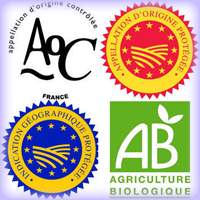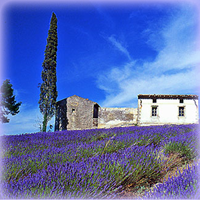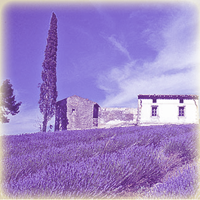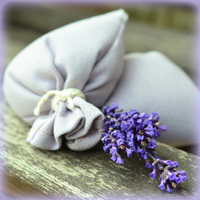The Lavandins

Les lavandins
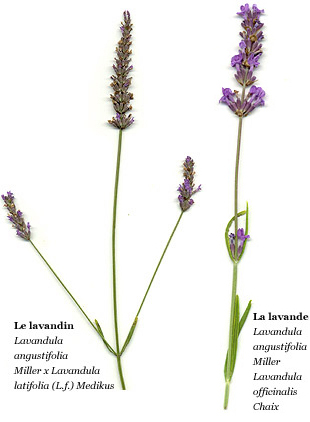 During the time when lavender gatherers went out to cut wild lavender, they had already noticed that some plants were more developed than others which were given the names “grande lavande”, “grosse lavande” or “lavande bâtarde”. These were the lavandins, issued from spontaneous hybridization of true lavender and aspic.
During the time when lavender gatherers went out to cut wild lavender, they had already noticed that some plants were more developed than others which were given the names “grande lavande”, “grosse lavande” or “lavande bâtarde”. These were the lavandins, issued from spontaneous hybridization of true lavender and aspic.
This hybridization is due to foraging insects, mainly bees, going from flower to flower transporting pollen from one species to another.
This phenomenon was verified in 1927 in the Chiris Company laboratories in Grasse, France. Artificial pollenization of aspic by lavender pollen enabled production of six seeds which, when planted, produced two individuals identified as “lavendins.”
In nature, there are many different lavandins, some more closely akin to true lavender and others to aspic. Intermediate features are possible, which often makes morphological identification difficult.
Note that it was in the mid-1920s that lavender quality was differentiated from that of lavandin which served to create some uncertainty between the two plants for several years.
"Since about 1930, next to True Lavender, a hybridization product from True Lavender and aspic appeared: lavandin. The plants are decidedly more developed than those of lavender and grow at much lower altitudes, generally around 400 meters (1300 ft) in flat, more fertile lands. Lavender essential oil, having a fragrance described as aromatic, floral, green, fresh and diffusing, is finer and richer than that of the greener and especially more camphorated lavandin. The price of lavender essential oil is about 4 or 5 times that of lavandin. Lavandin is developed for use in soap, household products, detergents and even in perfume because of its rather low price. Lavender use is favored for selective perfumery."
Jean Kerleo - Osmothèque

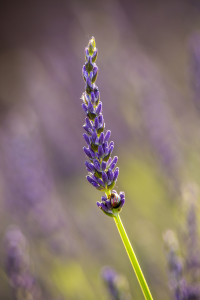 Characteristics
Characteristics
In hybrid species, the average value of the offspring is typically greater than that of the average species being crossed: the phenomenon of heterosis or hybrid vigor.
Like aspic, lavandins can grow at lower altitudes.
They feature more extensive plant development than does lavender, remarkable robustness, great adaptability to climate and soil types, and finally, a very high essential oil yield (up to 10 times higher than that of lavender), but with a less camphorated essential oil quality than that of aspic.
Lavandin , being a hybrid, is theoretically sterile. The pollen grains on the stamens have abnormalities and, with some exceptions, lavandin cannot completely fulfill development of its seed.
Reproduction, then, is commonly carried out by cuttings.
All plants grown initially from cuttings from the same plant are strictly identical; they in turn will be able to have cuttings made to give a new generation of equally similar plants.
The resulting ensemble consists of “clones” as compared to a biological population made up of different individuals.
Principal varieties of lavandin
Today four varieties account for almost all the surface planted in lavandin:
| Lavandin abrialis: | Lavandin super | Lavandin Sumian | Lavandin grosso |
 |
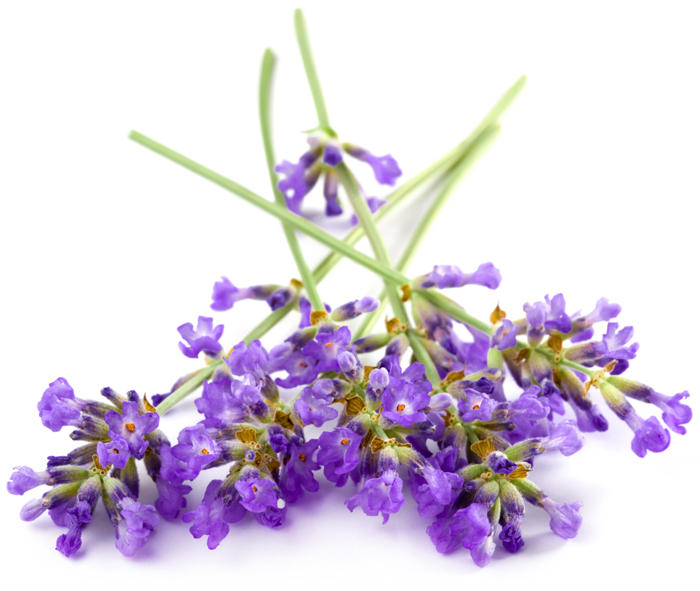 |
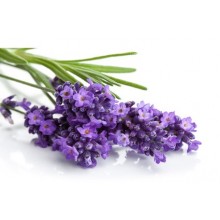 |
 |
| This high yield variety has spread widely since the 1930s, replacing the variety initially cultivated from wild plants, called “ordinary”. Currently, abrial represents around 7 to 10% of production. | Closer to fine lavender, this lavandin features a strong rooting capability. It first replaced Abrial which was withering away in traditional cultural zones (notably the Alps of Haute Provence) before being affected itself. It represents around 5% of production. | Fairly close to abrial, this variety has seen renewed interest these last few years. It represents 7-10% of production. | This clone was selected by Mr. Grosso from Goult, a village in the Vaucluse Department. Robust and productive, it has had a stunning success since 1972-1975. All the traditional varieties were affected by the decay which sometimes reduced the life of the plantations to 3-4 years instead of 10-12 years. These plantations were replaced by grosso which represents on average 70-80% of production, and in some regions over 90%, e.g., on the Valensole plateau. |

Lavandin cultivation
The very first attempts to grow lavandin were done by transplanting wild lavandin gathered in the valleys.
Thus these were “populations” of lavandin.
However, from the years 1925-1930 onwards, the technique using cuttings took over, allowing very rapid development in lavandin cultivation.
All the lavandin plantations existing today are composed of plants obtained by cuttings from clones. The same technique was applied equally to true lavender to obtain “cloned lavender”.
Fields of lavandin or cloned lavender are quite homogeneous and regular, while the plants of fine lavender present a widely disparate aspect which complicates mechanization.
Multiplication by cuttings has enabled selection of “clones” that have particular economic importance and rapid extension of cultures.





